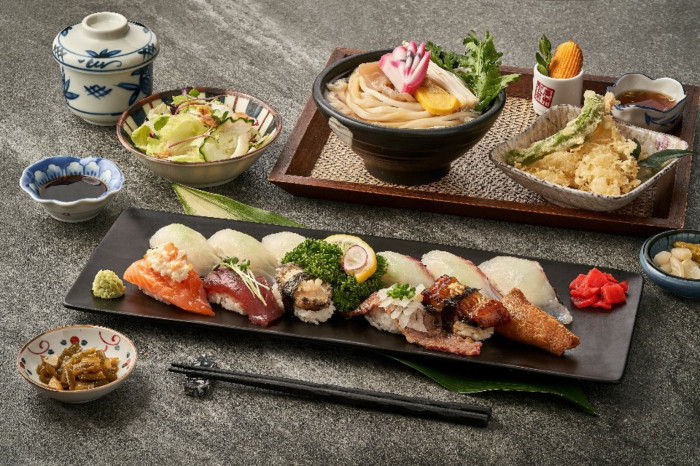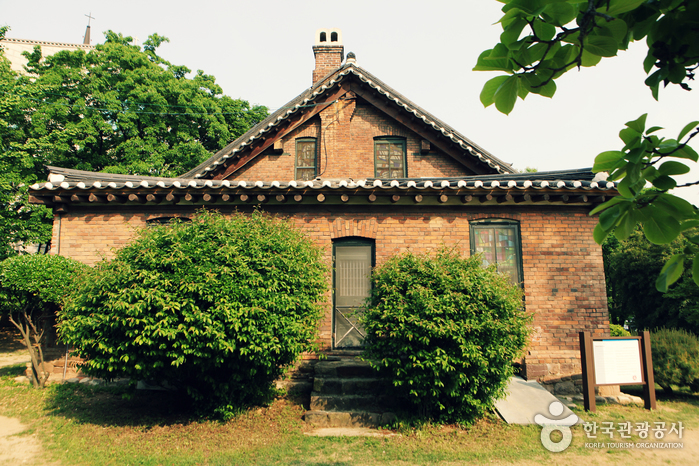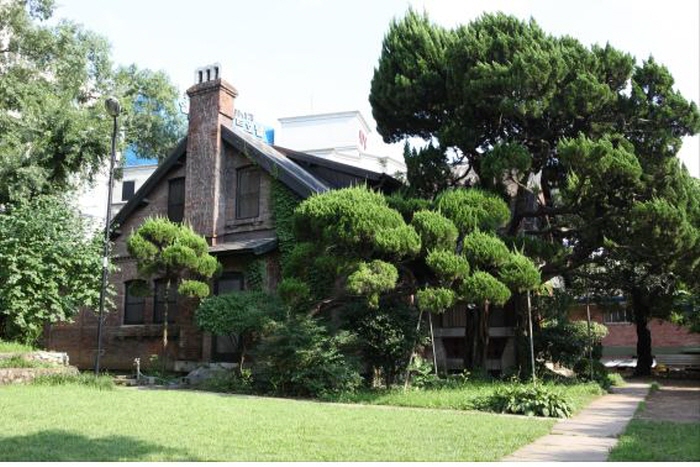Himart - Pyeongni Branch [Tax Refund Shop] (하이마트 평리점)
13.9Km 2024-04-19
228, Gukchaebosang-ro, Seo-gu, Daegu
-
Daegu Department Store - Praza Branch [Tax Refund Shop] (대구백화점 프라자점)
14.1Km 2024-04-18
333, Myeongdeok-ro, Jung-gu, Daegu
-
HITTO (힛또)
14.1Km 2021-03-24
333, Myeongdeok-ro, Jung-gu, Daegu
+82-53-256-6868
It is a place where all the sauces are made by hand. This Japanese (cuisine) restaurant is located in Jung-gu, Daegu. The representative menu is eel sushi.
Korea Medical Institute Daegu Branch ((재)한국의학연구소 대구분사무소)
14.2Km 2025-07-29
B1-B2, 20 Jungang-daero 66-gil, Jung-gu, Daegu
Korea Medical Institute (KMI), a leader in 'K-health checkups,' operates health checkup centers across eight locations nationwide, from Seoul to Jeju. KMI has been striving to prevent and detect diseases early. It has led the popularization of comprehensive medical examinations in Korea. Based on 43 years of accumulated data and expertise, KMI has enhanced its capabilities in health checkups, services, and brand value.
By utilizing its diagnostic data accumulated over the years, KMI provides accurate test results and follow-up care promptly.
KMI will stay committed to becoming a lifetime health management partner and 'K-health checkup' leader by leveraging its excellence in Korean medicine, beyond health checkups for foreign patients.
Gugongtan Makchang (구공탄막창 본점)
14.2Km 2023-11-13
308 Gukchaebosang-ro, Seo-gu, Daegu
Gugongtan Makchang is famous in the area for their chewy tripe, served pre-grilled and ready to cook. The tripe plumps up and gets tender after cooking over the fire and goes great as is or dipped in sauce and eaten with a leaf wrap. The mushroom doenjangjjigae is also something not to be missed.
Dodongseowon Confucian Academy [UNESCO World Heritage] (도동서원 [유네스코 세계문화유산])
14.3Km 2023-01-05
726, Gujiseo-ro, Dalseong-gun, Daegu
+82-53-616-6407
Dodongseowon Confucian Academy was first established by Confucian scholars in 1568 at the eastern base of Biseulsan Mountain, but was burnt down during the Imjin War (1592-1598). In 1605, the school was reconstructed on its current site and was renamed Borodongseowon. In 1607, the name was changed to Dongdoseowon. "Dongdo" means that the teachings ("do") of Confucianism come from the East (dong in Korean). Dodongseowon is one of the 47 major Confucian academies that was not affected by Heungseon Daewongun's order to eliminate Confucian academies.
Dongsan Cheongna Hill (동산청라언덕)
14.3Km 2024-10-25
2029 Dalgubeol-daero, Jung-gu, Daegu
+82-53-627-1337
Cheongna Hill is the place where Christian missionaries resided during the early 20 century, planting many ivies along the site. It is also called Dongsan Cheongna Hill for being on the eastern side of Daegu's center. There are many attractions in this beautiful garden including Chamness’ House, Switzer’s House, Blair’s House, 90 stairs, Daegu 3.1 Independence Movement Road, Daegu's first western apple tree, a memorial stone inscribed with the song "Thinking of My Friend” , and the cemetery of the missionaries and their family. Cheongna Hill is also the starting point of Daegu's Street Tour Course 2 as well as a popular drama film location.
House of Missionary Switze (선교사스윗즈주택)
14.3Km 2024-08-05
2029 Dalgubeol-daero, Jung-gu, Daegu
The House of Missionary Switze served as home for a host of American missionaries. Built between 1906 and 1910, the home is a Western-style structure with two above-ground floors and one basement level. In 1981, the house was used as company housing for doctors at the nearby Dongsan Hospital, at which point changes were made to the interior and exterior of the house. It was later changed into a missionary museum, displaying items used by the missionaries who lived in.
House of Missionary Chamness (선교사챔니스주택)
14.3Km 2022-09-06
2029, Dalgubeol-daero, Jung-gu, Daegu
+82-53-661-2193
House of Missionary Chamness was the home of American Christian missionary Chamness and his family. It was built in the Western-style and provides a glimpse into the daily life of American missionaries in Korea. The house, a simple building in comparison with the houses of America at the time, is now considered a very important treasure of Korea's modern history. The building has been converted into a small museum using artifacts from the missionaries to bring the past to life.
House of Missionary Blair (선교사블레어주택)
14.3Km 2019-11-27
2029, Dalgubeol-daero, Jung-gu, Daegu
+82-53-661-2193
The House of Missionary Blair was built in in the 1910's for his time of missionary work in Korea, but has been converted into a history museum and education center. The two-story red brick building has maintained its original construction, with only minor changes having been made over the years. The house is very representative of its time, with a brick chimney rising over the roof, and wooden flooring inside. The first floor was made up of a veranda, reception room, living room, bedrooms, dining room and kitchen. The second floor featured bedrooms and a bathroom. The windows can be opened both at the top and the bottom, and the veranda was used as a sunroom. The House of Missionary Blair is a great example of American architecture from the 1900's.

![Daegu Department Store - Praza Branch [Tax Refund Shop] (대구백화점 프라자점)](http://tong.visitkorea.or.kr/cms/resource/91/2889791_image2_1.jpg)



 English
English
 한국어
한국어 日本語
日本語 中文(简体)
中文(简体) Deutsch
Deutsch Français
Français Español
Español Русский
Русский